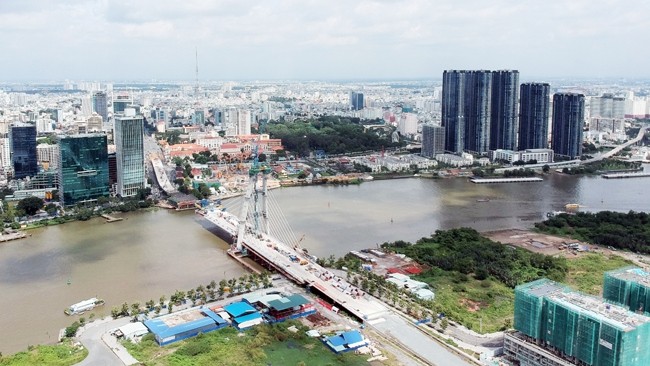Maintaining growth quality
During the 2016-2019 period, Ho Chi Minh City’s economy grew by an annual average of 7.22%, accounted for 22.2% of Vietnam’s economic output and contributed 27% to total government income, according to a draft political report of the municipal Party committee. The income per capita in 2019 reached an estimated US$6,400, more than twice the national average.
The city also saw strong growth in other areas. During the 2016-2019 period, tourism grew by more than 17% per year and the city welcomed nearly 33 million foreign arrivals, with the figure for 2019 alone at 8.6 million, making up nearly half of the total foreign tourists to Vietnam. The Index of Industrial Production (IIP) grew by an annual average of 7.7%, with four major industries expanding by 9% per year.
The municipal economy’s quality of growth and competitiveness have been enhanced thanks to a focus on innovation, research and the application of advanced technologies. According to the Ho Chi Minh City government, the ratio of domestic content in four major industrial sectors and two traditional industries has been increasing over the years and is estimated to reach 66% in 2020.
It is noteworthy that the IIP of the electronics-IT sector increased by 20.7% in 2019 thanks to the applications of science and technology from projects of global companies in semiconductor and microchip industries. The city has made a list of key industrial sectors and formulated policies to encourage their development. The initial result has been the formation of a network of supportive enterprises taking part more and more in global supply chains.
The efficiency of capital has been improved with the incremental capital-output ratio (ICOR) decreasing over the years. The ICOR for the 2016-2019 period was 4.64, compared with 4.76 in the previous five year period. The contribution of total factor productivity to the municipal economy has increased from 35.3% in 2016 to an estimated 42% in 2020.
Labour productivity has also grown steadily over the years and is the highest in Vietnam. Productivity in 2020 is estimated at VND333 million (US$14,300), 2.7 times higher than the national average.
Average productivity growth during the 2016-2020 period was 5.17%, compared with 4.42% during the 2011-2015 period, with productivity in the services sector growing by 5.8% annually.
Continuing effective measures
One of the important measures actively taken by the city government is reforming the business environment, which has significantly improved its competitiveness. The duration for investment registration procedures, for example, has been cut to ten days from 15 days in 2016. The duration for handling enterprise establishment procedures has also dropped from nine to three days. The proportion of business registrations made through the internet is estimated at 70%.
Thanks to such reforms, the total number of new businesses during the 2016-2020 is estimated at 209,100 with total registered capital of VND2,800 trillion (US$120.6 billion), up 58% in number and 236% in capital compared with the 2011-2015 period. It is expected that the city will have 449,350 registered enterprises by the end of 2020. It is notable that new businesses in four key industrial sectors increased by 17.3% annually while new businesses in garment and footwear grew by 15.2% per year.
The city has also focused on developing the Saigon Hi-tech Park (SHTP), whose contribution has been growing increasingly great. During the 2016-2020 period, its exports were estimated at US$63.5 billion, nearly five times larger than the 2011-2015 period. The SHTP is the core driving creativity and development in the city’s eastern part, the place that provides and nurtures scientific and technological ideas, attracts high-tech capital and workforce from at home and abroad.
Over the next five years, the Ho Chi Minh City Party committee has determined four main development programmes with dozens of specific projects, one of which is the programme to promote innovative businesses and develop key products, which is expected to exert a direct impact on the city’s economic growth.
According to Associate Professor Tran Hoang Ngan, Director of the Ho Chi Minh City Institute of Development Studies, the city needs to introduce specific measures to attract foreign direct investment selectively and give priority to projects that can help form domestic supply chains.
Professor Su Dinh Thanh, President of the Ho Chi Minh City University of Economics, said that turning Ho Chi Minh City into a regional financial centre is a burning desire of the city’s many generations of leaders, people and entrepreneurs. As such, the city needs to soon formulate a roadmap for it to become a financial centre because all the necessary conditions are already sufficient.
Ho Chi Minh City Party Secretary Nguyen Thien Nhan stated that the city must and will choose the path for faster development by promoting human intelligence, the power of information technology and artificial intelligence.
With digitalisation and the application of smart solutions, the city will achieve higher productivity and economic growth. As a result, the city will be more competitive, its enterprises better facilitated, its people happier and the government can function more effectively.
















